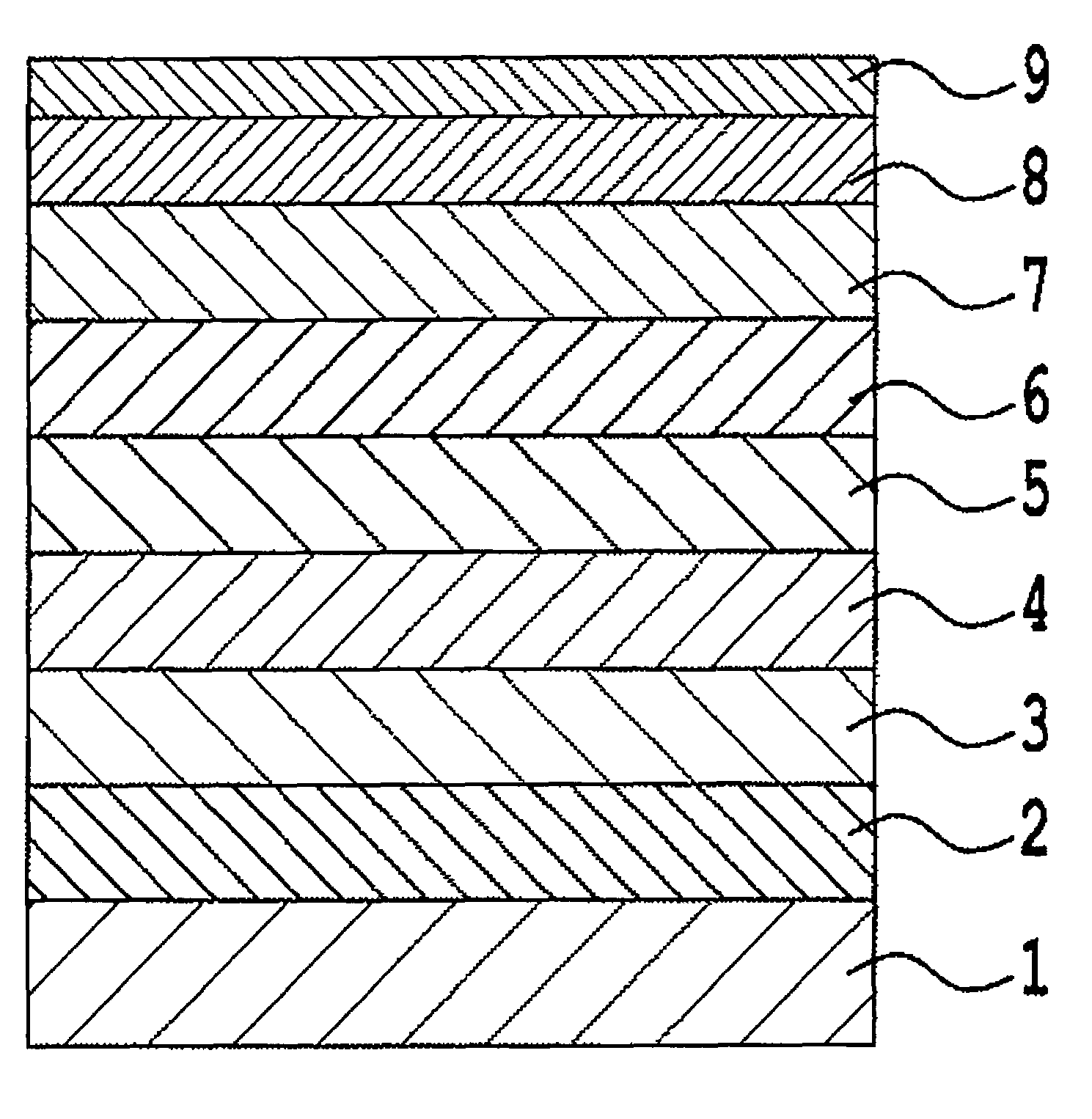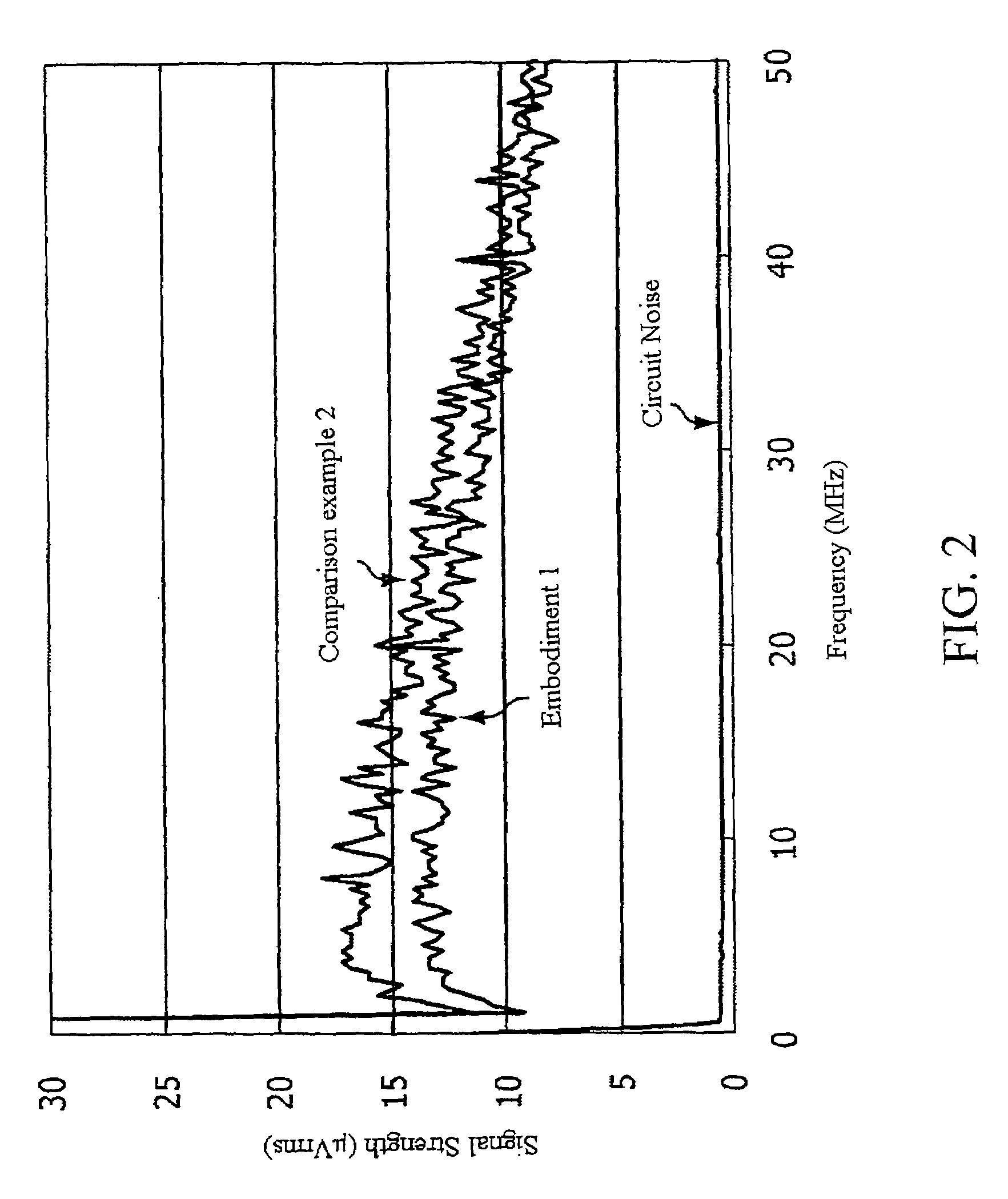Perpendicular magnetic recording medium
a magnetic recording medium and perpendicular technology, applied in the field of perpendicular magnetic recording medium, can solve the problems of increasing noise, increasing orientation dispersion, increasing signal output, etc., and achieves the effects of promoting magnetic isolation of magnetic crystal grains in the magnetic recording layer, reducing medium noise, and improving s/n
- Summary
- Abstract
- Description
- Claims
- Application Information
AI Technical Summary
Benefits of technology
Problems solved by technology
Method used
Image
Examples
embodiments
Embodiment 1
[0043]As the nonmagnetic substrate 1, a chemically reinforced glass substrate with a smooth surface (N-5 glass substrate manufactured by HOYA Corporation) was used; after cleaning, the substrate was placed in a DC magnetron sputtering system, and a Co3Zr5Nb target (taking as reference the total number of atoms, 3 at % Zr, 5 at % Nb, remainder Co; similarly hereafter) was used in an Ar gas atmosphere at a pressure of 0.67 Pa to deposit a CoZrNb amorphous soft magnetic backing layer 2 of film thickness 60 nm. Next, a Co35Ni4Fe2Si target was used in an Ar gas atmosphere at 0.67 Pa to deposit a CoNiFeSi first underlayer 3 of film thickness 6 nm. The CoNiFeSi film obtained has the fcc structure. Next, a Ru target was used in an Ar gas atmosphere at a pressure of 0.67 Pa to deposit a Ru first nonmagnetic intermediate layer 4 of thickness 0.7 nm. Then, in an Ar-4% N2 gas atmosphere at pressure 0.67 Pa, a Co4Fe target was used to deposit a CoFe—N second underlayer 5 of thickness...
embodiment 2
[0044]Except for using a Ni12Fe4Si target to deposit an NiFeSi first underlayer 3 of thickness 6 nm, the same method as in Embodiment 1 was repeated to manufacture the perpendicular magnetic recording medium. Here, the NiFeSi film obtained had the fcc structure.
embodiment 3
[0045]Except for using a Ru target to deposit a Ru first nonmagnetic intermediate layer 4 of thickness 1.6 nm, the same method as in Embodiment 1 was repeated to manufacture the perpendicular magnetic recording medium.
PUM
| Property | Measurement | Unit |
|---|---|---|
| thickness | aaaaa | aaaaa |
| thickness | aaaaa | aaaaa |
| thickness | aaaaa | aaaaa |
Abstract
Description
Claims
Application Information
 Login to View More
Login to View More - R&D
- Intellectual Property
- Life Sciences
- Materials
- Tech Scout
- Unparalleled Data Quality
- Higher Quality Content
- 60% Fewer Hallucinations
Browse by: Latest US Patents, China's latest patents, Technical Efficacy Thesaurus, Application Domain, Technology Topic, Popular Technical Reports.
© 2025 PatSnap. All rights reserved.Legal|Privacy policy|Modern Slavery Act Transparency Statement|Sitemap|About US| Contact US: help@patsnap.com



